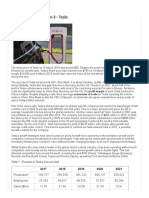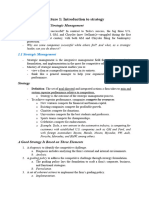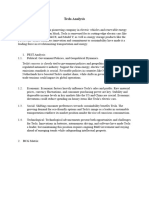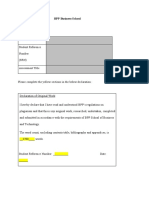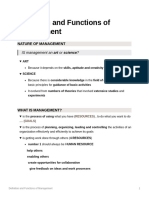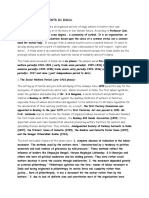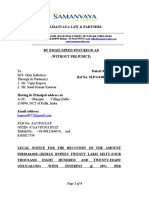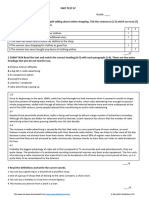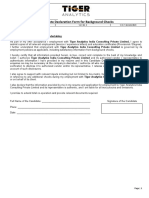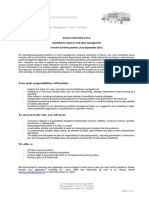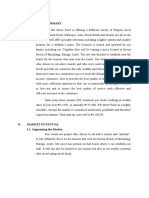Tesla Inc.
: Navigating Economic Systems and Performance Indicators
Tesla Inc., a pioneering force in the electric vehicle (EV) industry, operates at the intersection of
various economic principles, making it a prime case for understanding economic analysis,
economic freedom, state capitalism, and economic performance metrics. As an innovative
company led by Elon Musk, Tesla's trajectory illustrates how firms respond to economic
conditions, regulatory environments, and global market forces.
Economic analysis, a cornerstone of Tesla's strategic planning and decision-making, is
instrumental in the company's assessment of production costs, demand elasticity, and market
competition in the dynamic EV sector. Tesla's ability to achieve economies of scale, optimize
supply chains, and mitigate risks from raw material price fluctuations, such as lithium and
cobalt, directly influences its profitability and expansion strategies. By leveraging economic
models, Tesla determines optimal production levels, pricing strategies, and investment decisions
that align with consumer demand and policy shifts.
Operating in multiple countries, Tesla's operations are significantly influenced by economic
freedom, particularly in regions with deregulated markets that foster innovation and
competition. The United States, where Tesla is headquartered, provides an environment
conducive to entrepreneurship, with access to venture capital, intellectual property protections,
and minimal restrictions on business operations. However, Tesla also faces regulatory
challenges, such as tariffs, environmental policies, and varying taxation regimes, demonstrating
the varying degrees of economic freedom across jurisdictions and their impact on corporate
growth.
Tesla's global presence requires an understanding of different economic systems. In the U.S.,
Tesla operates within a capitalist framework where market forces dictate success. In contrast, its
operations in China present a different dynamic. State capitalism, a system in which the state
plays a significant role in the economy, influences the business landscape. The Chinese
government plays a direct role in market outcomes, offering subsidies for EV adoption while
maintaining control over strategic industries. Tesla’s Gigafactory in Shanghai, which was
established with regulatory approvals and incentives from the Chinese government, exemplifies
how firms navigate state capitalism while balancing economic freedom and government
intervention.
The company's performance is closely monitored through leading economic indicators,
including GDP growth, inflation rates, and consumer confidence indices. These indicators play a
crucial role in understanding and predicting Tesla's success. A growing economy often translates
into increased disposable income, supporting higher EV adoption. Interest rates, another key
indicator, affect Tesla's ability to secure financing for expansion and impact consumer loan
affordability. Additionally, raw material price fluctuations influence production costs, further
linking Tesla’s success to macroeconomic trends.
Economic growth presents both opportunities and challenges for Tesla. On one hand, expanding
middle classes in emerging markets increase demand for EVs, supporting revenue growth and
stock performance. On the other hand, rapid economic expansion can lead to inflationary
pressures, increasing production costs and squeezing profit margins. Moreover, technological
advancements and policy changes influence Tesla's operational efficiency and competitive
advantage, requiring continuous adaptation to sustain long-term growth.
�Global economic indices further reflect Tesla's position within the broader economy. The World
Economic Forum’s Global Competitiveness Index, which ranks countries based on innovation
and infrastructure, highlights the environments in which Tesla thrives. Similarly, the Ease of
Doing Business Index influences Tesla’s international expansion strategy, as regulatory hurdles
can impact the company’s ability to establish manufacturing facilities and distribute vehicles
efficiently. The Human Development Index, measuring education and quality of life, also
indirectly affects Tesla, as higher standards of living correlate with greater adoption of
sustainable energy solutions.
Tesla’s case underscores the interplay between economic analysis, policy environments, and
corporate strategy. By navigating economic freedom, state capitalism, and various economic
systems, Tesla exemplifies how firms can leverage economic principles to drive growth and
maintain a competitive edge. The company’s ability to adapt to global economic trends and
performance indicators ensures its continued influence in the automotive and energy sectors,
reinforcing the importance of economic literacy in business decision-making.
Discussion Questions:
1. How does Tesla’s approach to economic analysis influence its business decisions and
global expansion strategy?
2. In what ways does economic freedom benefit Tesla, and how do regulatory challenges
shape its operations?
3. How does Tesla navigate different economic systems, particularly in the U.S. and
China, to maintain its competitive edge?
4. What are the key economic indicators that impact Tesla’s performance, and how can
they be used to predict future growth?













